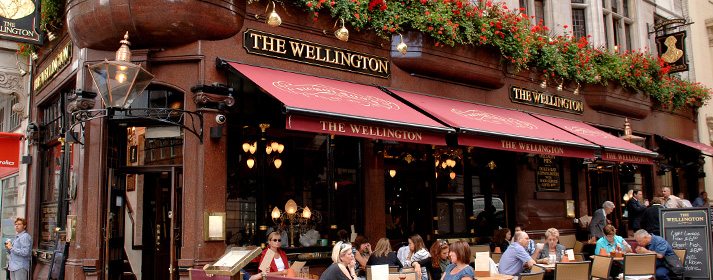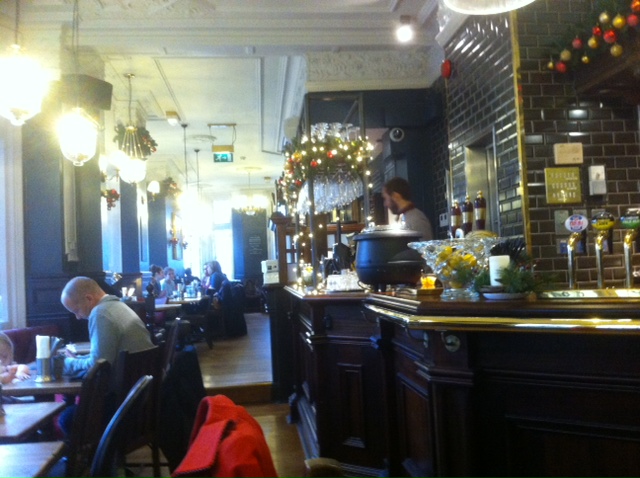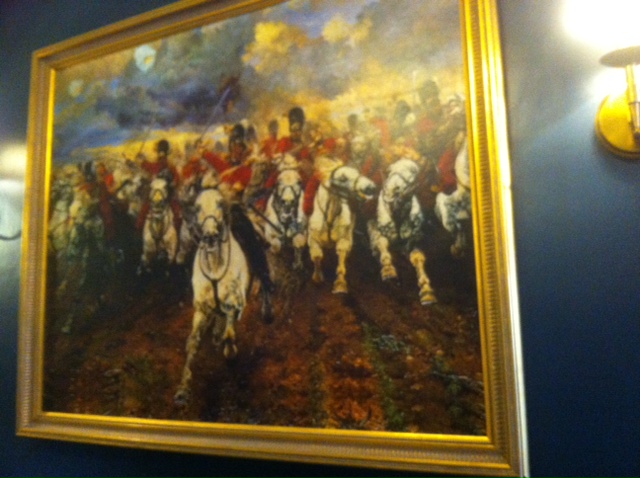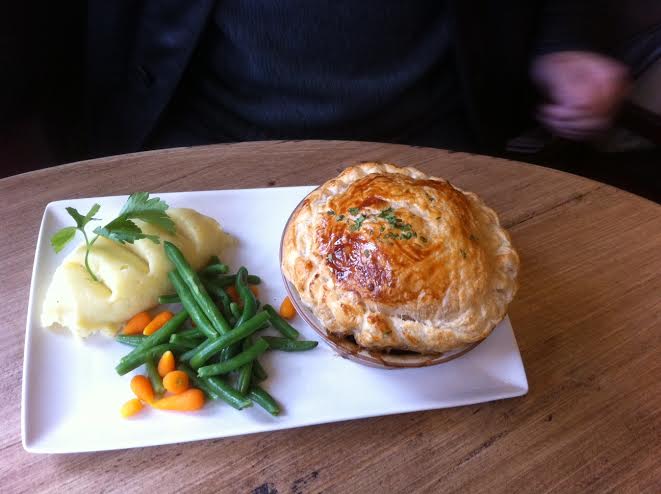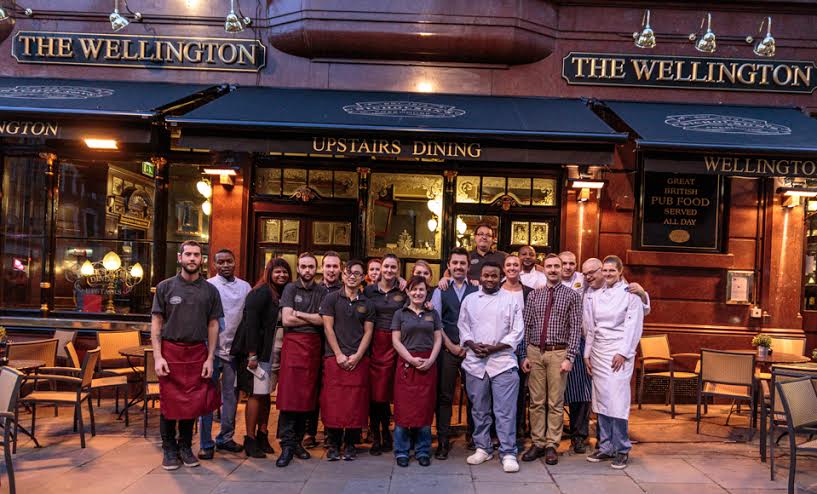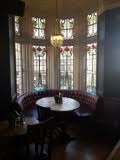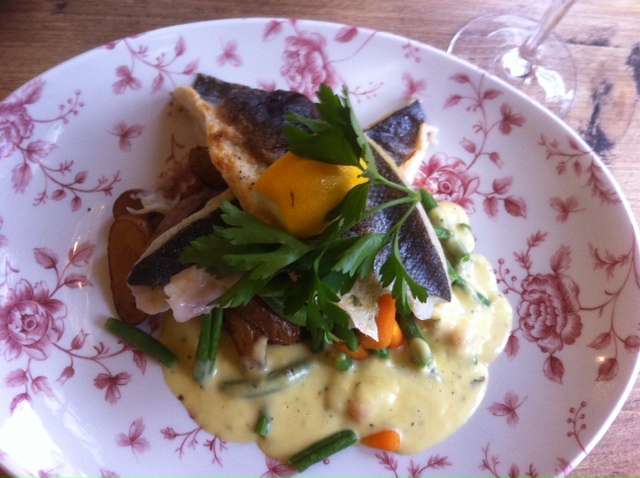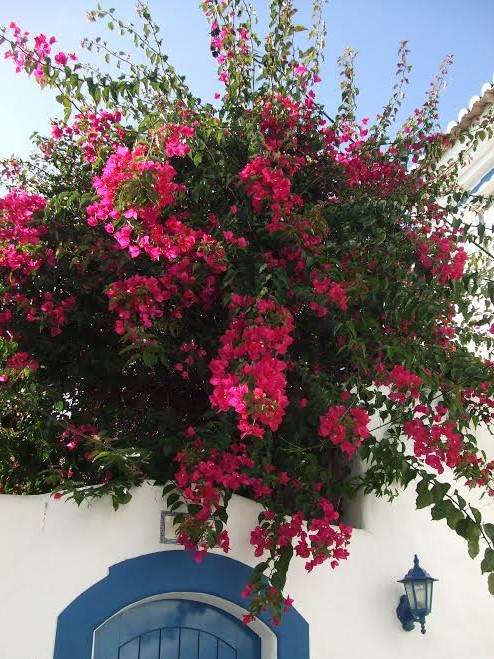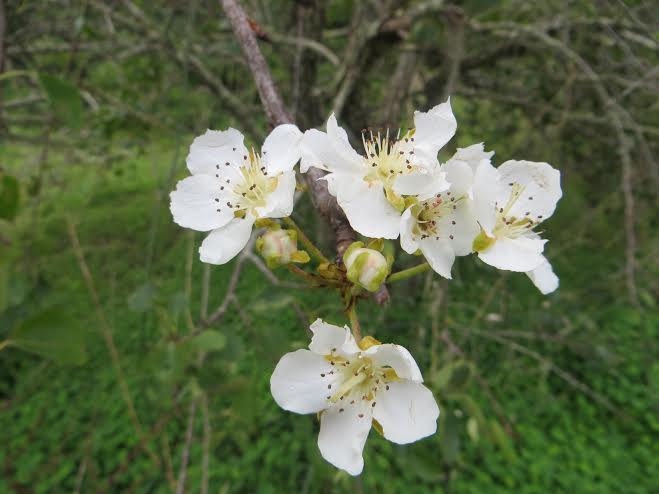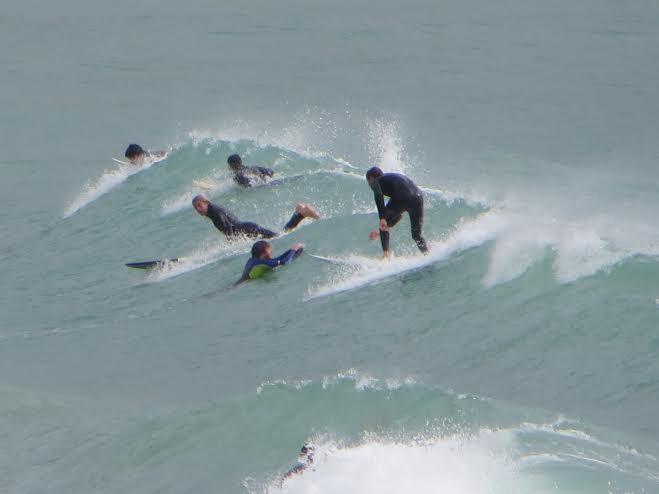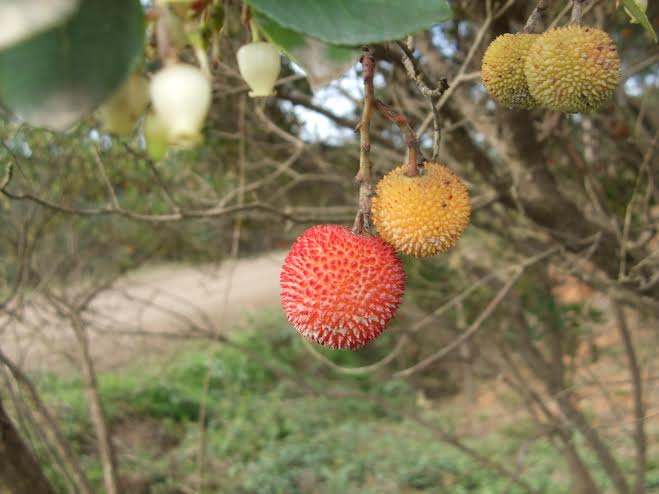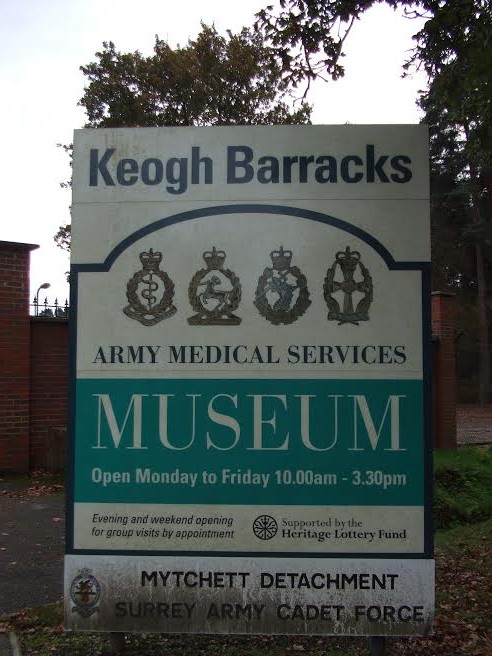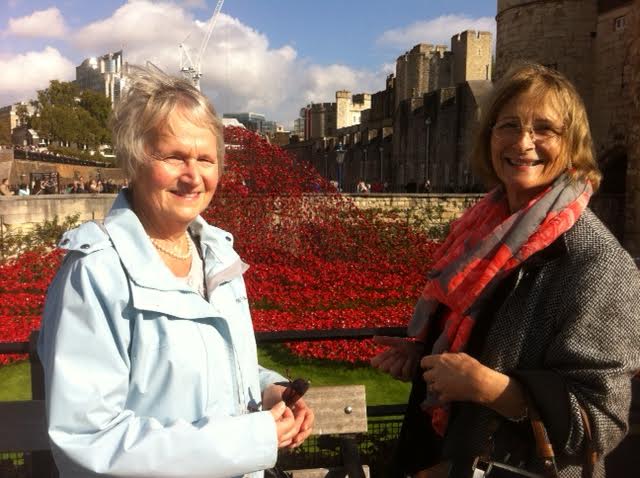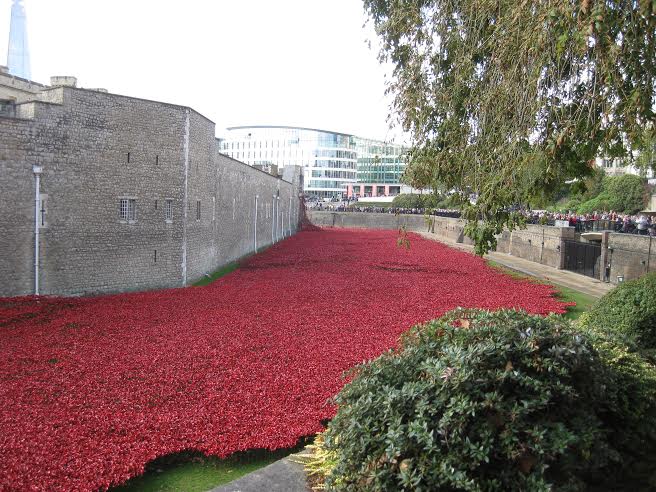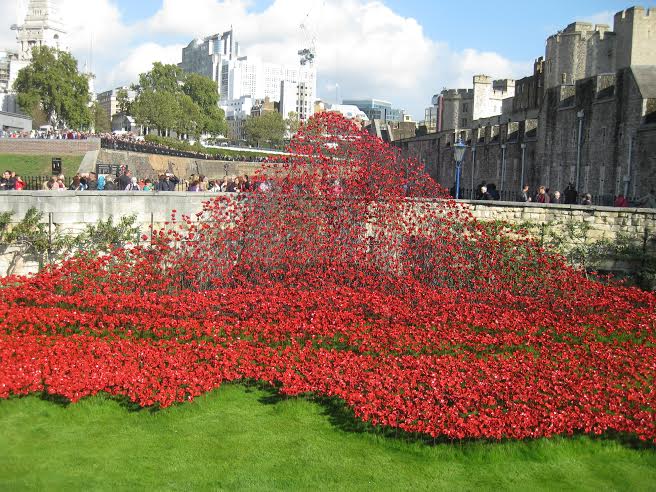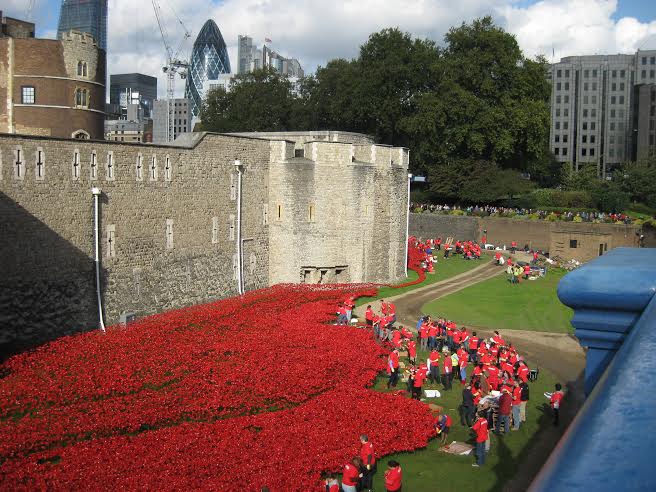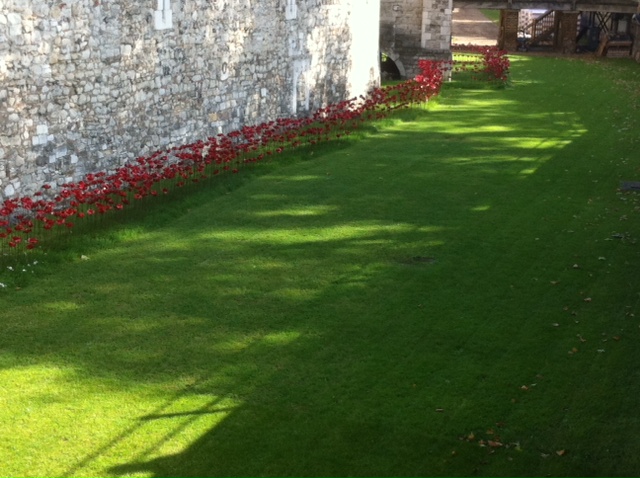OK, so it’s the middle of winter, the wind is hurtling along the Thames, and you’re crossing Waterloo Bridge, head down, unaware that the bridge was rebuilt in the 2nd World War, and the workforce included women. The only thought in your head is food and shelter.
Such was the situation a couple of years ago as Penny Deacon and I (writers and organisers of Words for the Wounded) reached the Strand, and there it was; this beacon in a sea of misery, the fantastic, fantabulous Wellington on the Strand. Straight across the road we powered, and hit the stairs to the restaurant at a run, resembling nothing as much as drowned rats.
That was the start of our Wellie adventure: within a few months it was the Graham’s London ‘local’. Penny lives in the West Country so looks on enviously, but I’m in High Wycombe, which is just a hop skip and jump from town. Often I meet Jan Speedie (besties since we were nine and she is also an organiser of Words for the Wounded). We spend an inordinate amount of time in the National or Portrait Galleries, in St Martin’s in the Fields poking about, or at the theatre, or exploring the City. Where do we eat? The Wellie of course.
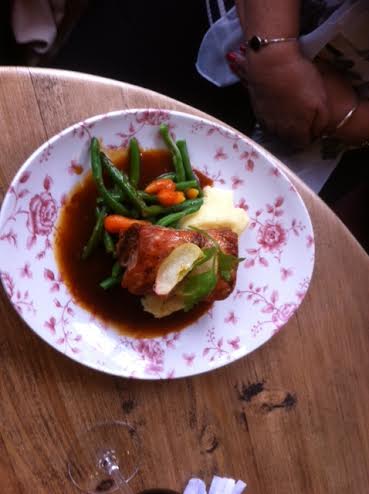 Sticky slow-braised pork belly.
Sticky slow-braised pork belly.
But why? Isn’t one pub much like another? I think, quite frankly, that whoever said that, needs to go and wash out her/his mouth with soap, as my mother would say.
The Wellington has the knack of becoming special to everyone we’ve brought along; the ‘grands’ love it, our friends too. It dates from 1903 and its neo-gothic exterior is a bit of a landmark. It is named after Arthur Wellesley, Duke of Wellington whose historic victory over Napoleon in 1815 ended the Napoleonic Wars. (If you haven’t been to Apsley House, home of the first Duke of Wellington and his descendants, you should. It stands right in the heart of London at Hyde Park Corner.)
The Wellingon sits next to Covent Garden, a name derived from the Convent Garden, which belonged to Westminster Abbey. It was to Covent Garden that I went to buy a gift for my granddaughter with money presented by Jose on behalf of the staff, as she was having a serious operation that day.
The staff are gorgeous. There’s the manager, Ruth, from Australia, Jose the team leader, (Spanish) who wins the rosette for character. There’s Michal, assistant manager, who grows a moustache for charity from time to time and who has read Maeve’s Afternoon Delight, so has a big tick from me. There’s our lovely pal Eszter from Budapest who we love because of her great kindness, and Thomas from Krakow who I’m trying to get to write a feature with me about Krakow for Frost Magazine.
The ambiance is smart as a button, especially after its recent makeover but so many of the original features are still there that it’s hard to go wrong. One of the highlights for me is the Art Nouveau windows.
So, now we come to the food, of course. My favourite is the belly pork, Dick seldom strays from the sausage and mash, but Jan plumps for the fish fillets or seafood pie. We invariably add a large glass of Pino Grigio each. It’s always the right temperature, always rather too nice.
Let’s not forget the bar… The Wellington boasts a gorgeous long bar, and that brings me to the ales, which Dick and his bestie, Tim Norman, swear by.
The ales change seasonally so the Wellie rotates between 18 seasonal ales 4 times per year and also rotates between 19 National favourite ales. Nicholsons Pale Ale is always stocked – it is a classic English-style Pale Ale and brewed exclusively for Nicholson’s by St Austell Brewery. It is brewed with the finest Cornish Maris Otter barley.
If you’re after a super friendly attractive venue, with great food and drink, you don’t need to be freezing. Just head to the Wellie (The Wellington on the Strand, 351 Strand. London) www.nicholsonspubs.co.uk/thewellingtonstrandlondon

